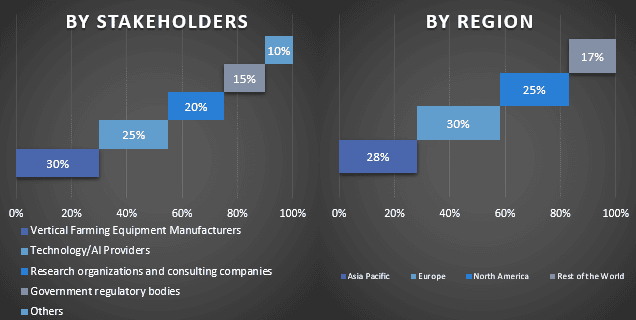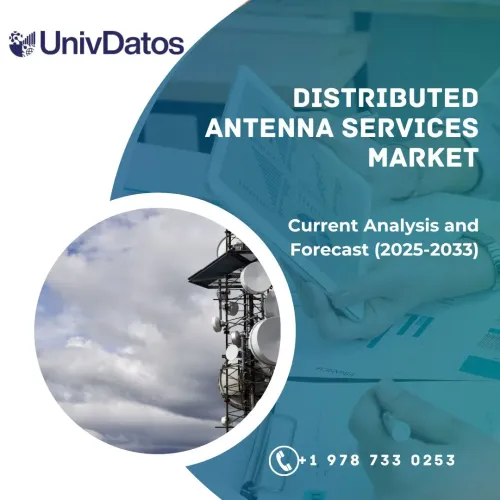- Home
- About Us
- Industry
- Services
- Reading
- Contact Us
Vertical Farming Market: Current Analysis and Forecast (2022-2028)
Emphasis on Method (Hydroponics, Aeroponics, and Aquaponics); Structure (Shipping Container Based and Building- based); Component (Irrigation, Lightning, Climate Control, Building Control, and Others) and Region/Country

The vertical farming market is expected to register a CAGR of approx. 25% over the period of 2022-2028. Vertical Farming—also referred to as Indoor farming or urban farming is the process of growing food in vertical layers, typically in structures like shipping containers, skyscrapers, and used warehouses. Organic food is thought to be more wholesome, safe, and environmentally beneficial. The rise of vertical farming depends on rising global demand for food and rapid increase in urbanization. However, vertical farming requires equipment which increases the initial cost of setting up the system, also, there is lack of awareness about the technologies being used in alternative agriculture practices such as vertical farming. The market players are following both organic and inorganic growth strategies to sustain the competitive edge. For instance, in October 2022, Aerofarms, announced its plan to expand further in the middle east with a partnership with QFZA and Doha Venture Capital (DVC) to build a commercial indoor vertical farm in Qatar Free Zones (QFZ) that offers unparalleled connectivity and access to the region. Similarly, in June 2021, the indoor farming company Bright farms in view of developing its production level has launched Brightlabs, a world-class innovation and research hub launching at its Ohio growing facility. Furthermore, the vertical farming, a non-traditional method of crop cultivation enables a negligible effect on climate, less area of equipment and less water consumption, hence the market is anticipated to grow on account of increased environment adoption process.
Some of the major players operating in the market include AeroFarms; 4D Bios Inc; Plenty Unlimited Inc; Freight Farms, Inc; Urban Crop Solutions; Sky Greens; Green Sense Farms Holdings Inc; AmHydro; Planet Farms Holdings S.P.A; Koninklijke Philips N.V. are some of the key players in the market. Several M&As along with partnerships have been undertaken by these players to facilitate customers with hi-tech and innovative products/technologies.
Insights Presented in the Report
“Amongst method, hydroponics segment accounted for the significant share in the market in 2020”
Based on method, the market is segmented into hydroponics, aeroponics, and aquaponics. The hydroponics segment accounted for a significant market share, and it is estimated that it will grow rapidly during the projected timeframe. Increased demand for organic food coupled with rising urbanization support the market share even more on a global scale. For instance, between 2000 and 2030, annual loss 1.6 to 3.3 million hectares of prime agricultural land has promoted alternative practices such as vertical farming as per the United Nations Convention to Combat Desertification (UNCCD) report.
“Amongst structure, the shipping container-based segment is expected to witness considerable CAGR during the forecast period”
Based on structure, the market is fragmented into shipping container-based and building-based. The shipping container segment accounted for a significant market share, and it is estimated that it will grow rapidly during the projected timeframe. This growth is attributed to the ability of the structure regardless of location, to aid with the growth of crops. Additionally, as there is more competition, shipping container costs fall as a result of the comparatively low cost of purchasing secondhand containers
“Amongst component, the lighting segment accounted for the significant share in the market in 2020”
Based on component, the market is divided into lighting, irrigation, climate control, building material, and others. The lighting segment accounted for a significant market share, and it is estimated that it will grow rapidly during the projected timeframe. One of the advanced lighting is artificial lighting offers the necessary light intensity for crop growth.
“Asia Pacific to witness significant growth during the forecast period”
Asia Pacific constitutes a major market for the vertical farming industry owing to the primary factor projected to drive the demand is growing awareness of the significance of alternative farming due to the decreasing quantity of fertile agricultural land and the growing population in this region. Furthermore, the Asia Pacific region has been expecting an upsurge rise in demand for organic foods.
Reasons to buy this report:
- The study includes market sizing and forecasting analysis validated by authenticated key industry experts.
- The report presents a quick review of overall industry performance at one glance.
- The report covers an in-depth analysis of prominent industry peers with a primary focus on key business financials, product portfolio, expansion strategies, and recent developments.
- Detailed examination of drivers, restraints, key trends, and opportunities prevailing in the industry.
- The study comprehensively covers the market across different segments.
- Deep dive regional and country-level analysis of the industry.
Customization Options:
The global vertical farming market can further be customized as per the requirement or any other market segment. Besides this, UMI understands that you may have your own business needs, hence feel free to connect with us to get a report that completely suits your requirements.
Table of Content
Research Methodology for the Vertical Farming Market Analysis (2022-2028)
Analyzing the historical market, estimating the current market, and forecasting the future market of the global vertical farming market were the three major steps undertaken to create and analyze the adoption of vertical farming in major regions globally. Exhaustive secondary research was conducted to collect the historical market numbers and estimate the current market size. Secondly, to validate these insights, numerous findings and assumptions were taken into consideration. Moreover, exhaustive primary interviews were also conducted, with industry experts across the value chain of the global Vertical farming market. Post assumption and validation of market numbers through primary interviews, we employed a top-down/bottom-up approach to forecasting the complete market size. Thereafter, market breakdown and data triangulation methods were adopted to estimate and analyze the market size of segments and sub-segments of the industry pertains to. Detailed methodology is explained below:
Analysis of Historical Market Size
Step 1: In-Depth Study of Secondary Sources:
Detail secondary study was conducted to obtain the historical market size of the vertical farming market through company internal sources such as annual reports & financial statements, performance presentations, press releases, etc., and external sources including journals, news & articles, government publications, competitor publications, sector reports, third-party database, and other credible publications.
Step 2: Market Segmentation:
After obtaining the historical market size of the vertical farming market, we conducted a detailed secondary analysis to gather historical market insights and share for different segments & sub-segments for major regions. Major segments are included in the report as method, structure, and component. Further country-level analyses were conducted to evaluate the overall adoption of testing models in that region.
Step 3: Factor Analysis:
After acquiring the historical market size of different segments and sub-segments, we conducted a detailed factor analysis to estimate the current market size of the vertical farming market. Further, we conducted factor analysis using dependent and independent variables such as rising global demand for food and rapid increase in urbanization. A thorough analysis was conducted for demand and supply-side scenarios considering top partnerships, mergers and acquisitions, business expansion, and product launches in the vertical farming market across the globe.
Current Market Size Estimate & Forecast
Current Market Sizing: Based on actionable insights from the above 3 steps, we arrived at the current market size, key players in the global Vertical farming market, and market shares of the segments. All the required percentage shares split, and market breakdowns were determined using the above-mentioned secondary approach and were verified through primary interviews.
Estimation & Forecasting: For market estimation and forecast, weights were assigned to different factors including drivers & trends, restraints, and opportunities available for the stakeholders. After analyzing these factors, relevant forecasting techniques i.e., the top-down/bottom-up approach were applied to arrive at the market forecast for 2028 for different segments and sub-segments across the major markets globally. The research methodology adopted to estimate the market size encompasses:
- The industry’s market size, in terms of revenue (USD) and the adoption rate of Vertical farming across the major markets domestically
- All percentage shares, splits, and breakdowns of market segments and sub-segments
- Key players in the global vertical farming market in terms of products offered. Also, the growth strategies adopted by these players to compete in the fast-growing market
Market Size and Share Validation
Primary Research: In-depth interviews were conducted with the Key Opinion Leaders (KOLs) including Top Level Executives (CXO/VPs, Sales Head, Marketing Head, Operational Head, Regional Head, Country Head, etc.) across major regions. Primary research findings were then summarized, and statistical analysis was performed to prove the stated hypothesis. Inputs from primary research were consolidated with secondary findings, hence turning information into actionable insights.
Split of Primary Participants in Different Regions

Market Engineering
The data triangulation technique was employed to complete the overall market estimation and to arrive at precise statistical numbers for each segment and sub-segment of the global vertical farming market. Data was split into several segments & sub-segments post studying various parameters and trends in the areas of the method, structure, and component in the global vertical farming market.
The main objective of the Global Vertical Farming Market Study
The current & future market trends of the global vertical farming market were pinpointed in the study. Investors can gain strategic insights to base their discretion for investments on the qualitative and quantitative analysis performed in the study. Current and future market trends determined the overall attractiveness of the market at a regional level, providing a platform for the industrial participant to exploit the untapped market to benefit from a first-mover advantage. Other quantitative goals of the studies include:
- Analyze the current and forecast market size of the vertical farming market in terms of value (USD). Also, analyze the current and forecast market size of different segments and sub-segments
- Segments in the study include areas of the method, structure, and component
- Define and analysis of the regulatory framework for the vertical farming industry
- Analyze the value chain involved with the presence of various intermediaries, along with analyzing customer and competitor behaviors of the industry
- Analyze the current and forecast market size of the vertical farming market for the major region
- Major countries of regions studied in the report include Asia Pacific, Europe, North America, and the Rest of the World
- Company profiles of the vertical farming market and the growth strategies adopted by the market players to sustain in the fast-growing market
- Deep dive regional level analysis of the industry
Related Reports
Customers who bought this item also bought










